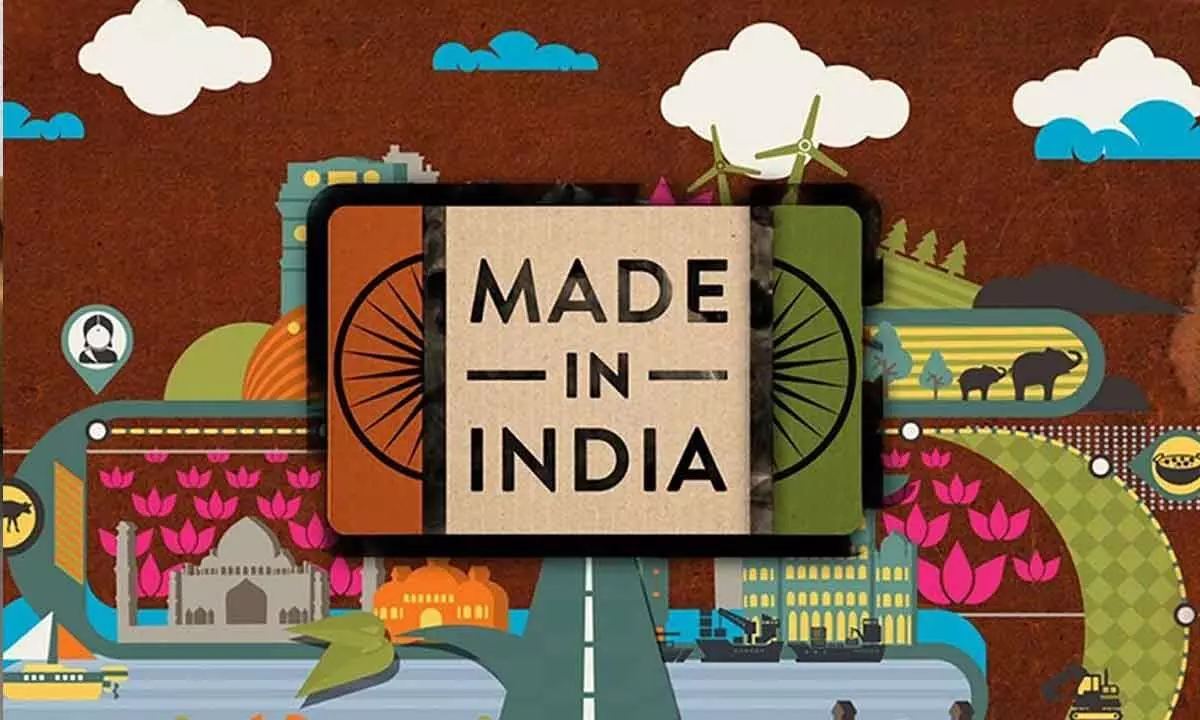India’s growth model should be ‘investment and export-led’ and not ‘consumption-led’
The Centre must swap debt through equity and thereby leverage its value
image for illustrative purpose

India has over 63 million MSMEs contributing about 30 per cent of GDP and 40-45 per cent of exports. However, barely 15-17 per cent of them are registered with UDYAM Platform due to tax-hazards and fear of regulatory compliance
Indiscriminate privatisation through disinvestment or long-term lease or eventually doing away with public sector units (PSUs) is not the solution to boost Indian economy. Quite on the contrary, the Centre must think in terms of creating new, effective and efficient PSUs jointly with the state governments and private sector. Atleast that’s what R.P. Gupta, industrialist, authorand economic thinker, feels. Interestingly, the first edition of Gupta’s much-talked about book: “Turn Around India-Through Inclusive Governance & Team Spirit” was launched by Narendra Modi, when he was the Chief Minister of Gujarat.
In the latest edition of his book, Gupta, also the Chairman of Shivom Minerals, has come up with the suggestion that by and large, government finances must be leveraged by involving PSUs and private corporate through PPP and VGF (Viability Gap Funding). The Centre may mull the idea of swapping of debt through equity and thereby leverage the promoter’s (in this case, the government) value and subsequently use the funds for various development activities and projects.
Railways and other corporation like NTPC and NHPC and energy related corporations, may be corporatized and listed like SAIL and CIL, he suggested, adding that this would be a game changer for the Indian economy.
Speaking to BizzBuzz, Gupta suggested that the central and state planning commissions, must be restored and revived for judicious usage of scarce ‘capital resources’ of the nation.
The Planning Commission must rope in engineers, MBAs and subject-experts, and economists for capex-planning.
Total investment must be well planned for supporting: (a) Consistent GDP growth, (b) Human development such as education, health and sanitation (c) Basic needs like water, electricity and commuting.
“There should also be regular survey in each field for getting feed-back and transparency of economic-data must be ensured and used for policy correction,” said Gupta, adding that India’s growth-model should be ‘investment and export-led’ and not ‘consumption-led’. Economic-efficiency of India must be improved to promote exports, while at the same time the cost of basic inputs like capital, energy, logistics andminerals must be reduced.
India has over 63 million MSMEs contributing about 30 per cent of GDP and 40-45 per cent of exports, employing nearly 113 million persons. However, barely 15-17 per cent of them are registered with UDYAM Platform due to tax-hazards and fear of regulatory compliance. Hence, they are unable to avail bankcredit despite the decent credit guarantee cover. The real problemsare complicated GST andcurbing of cash transaction. Many of them are closed or on the verge of closure after 2016. That is not factored in GDP data. They are unable to compete with large-companies.
“The solution, therefore, lies in GST exemption/incentives to micro and small units only, somewhat similar to the excise regime. Various models in this regard could be: Lower income-tax andincome slab rates for MSMEs. For micro units, the government may also explore total exemption, if feasible; regulatory easement is most crucial, particularly for the small and medium unit, pro-active role of DIC and DC and enactment of laws that bind their recommendation on all other departments,” said Gupta.
On the forthcoming Union Budget, he said that the tax/GDP ratio has increased from 16.4 per cent to about 20.5 per cent in the decade 2014-24 and hence, there is no scope for further increase. Rather, custom and excise duty on petroleum-products should be rolled back, particularly cooking-gas and diesel. Exportduty on minerals, on low-grade iron ore having 52-58 per cent Fe-content, must be levied at 30 per cent for promoting beneficiation of ironore as per NMP-2019 and Miningministry committee’s resolution in 2020. That will increase supply of usable grade Iron-ore, cut imports. Eventually, it shall reduce steel price, he said.


